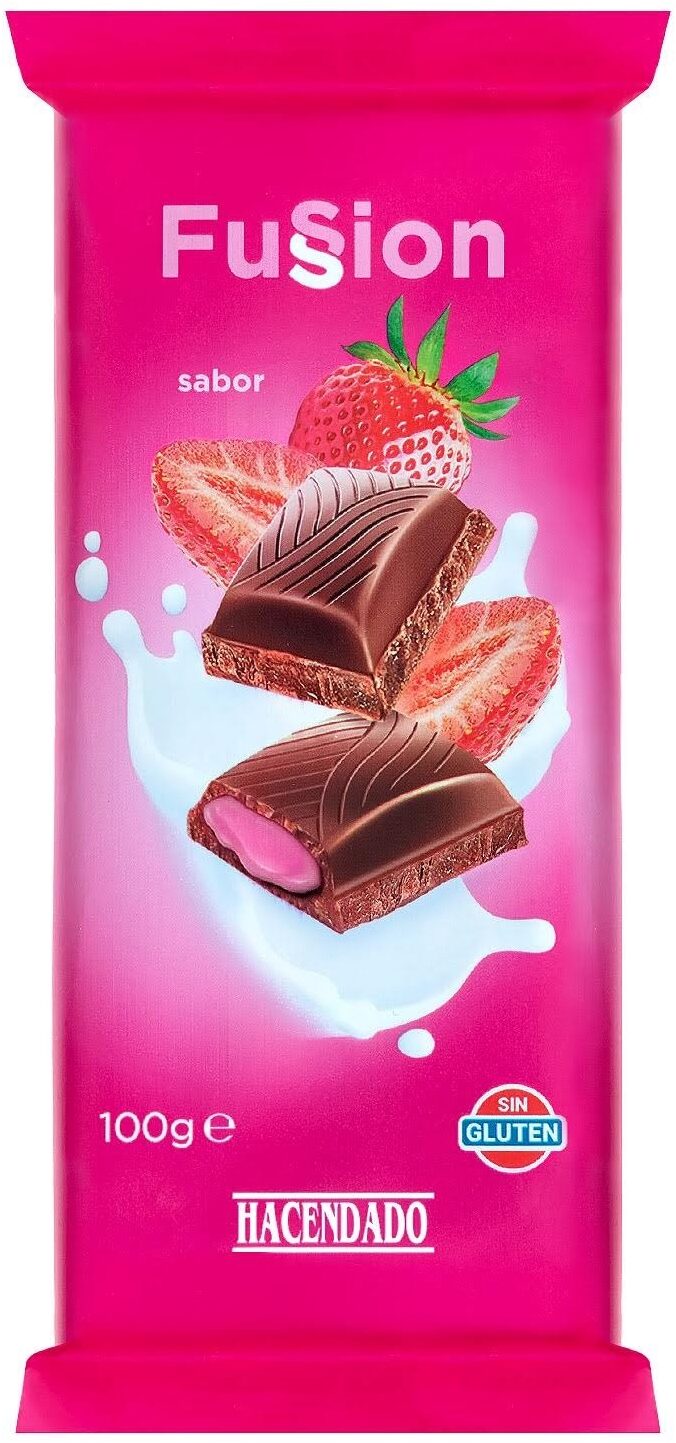Fussion, chocolate sabor a fresa - Hacendado - 100g
This product page is not complete. You can help to complete it by editing it and adding more data from the photos we have, or by taking more photos using the app for Android or iPhone/iPad. Thank you!
×
Barra-kodea: 8480000124876 (EAN / EAN-13)
Izen arrunta: Chocolate con leche relleno sabor a fresa
Kopurua: 100g
Ontziratzea: es:Green dot
Markak: Hacendado
Kategoriak: en:Snacks, en:Sweet snacks, en:Cocoa and its products, en:Chocolates, en:Botanas, en:Chocolate relleno, en:Snacks dulces
Etiketak, ziurtagiriak, sariak: en:No gluten, en:Punto Verde, en:Sin gluten
Saltzen diren herrialdeak: Espainia
Matching with your preferences
Ingurumena
Ontziratzea
Transportation
Report a problem
Datuen iturria
Product added on by kiliweb
Last edit of product page on by thaialagata.
Produktuaren orria -gatik editatua alia, halal-app-chakib, musarana, roboto-app, teolemon, yuka.RnYwOEM1d0l0cVVZbk1ZY29UemU1OXR0NE1DT2ZYbnZGZE05SVE9PQ, yuka.Uy9zUEU2UmNsdXNIbi9BZy9oVHpvb3hSNmJ1T0FUaWJPcllOSWc9PQ.








